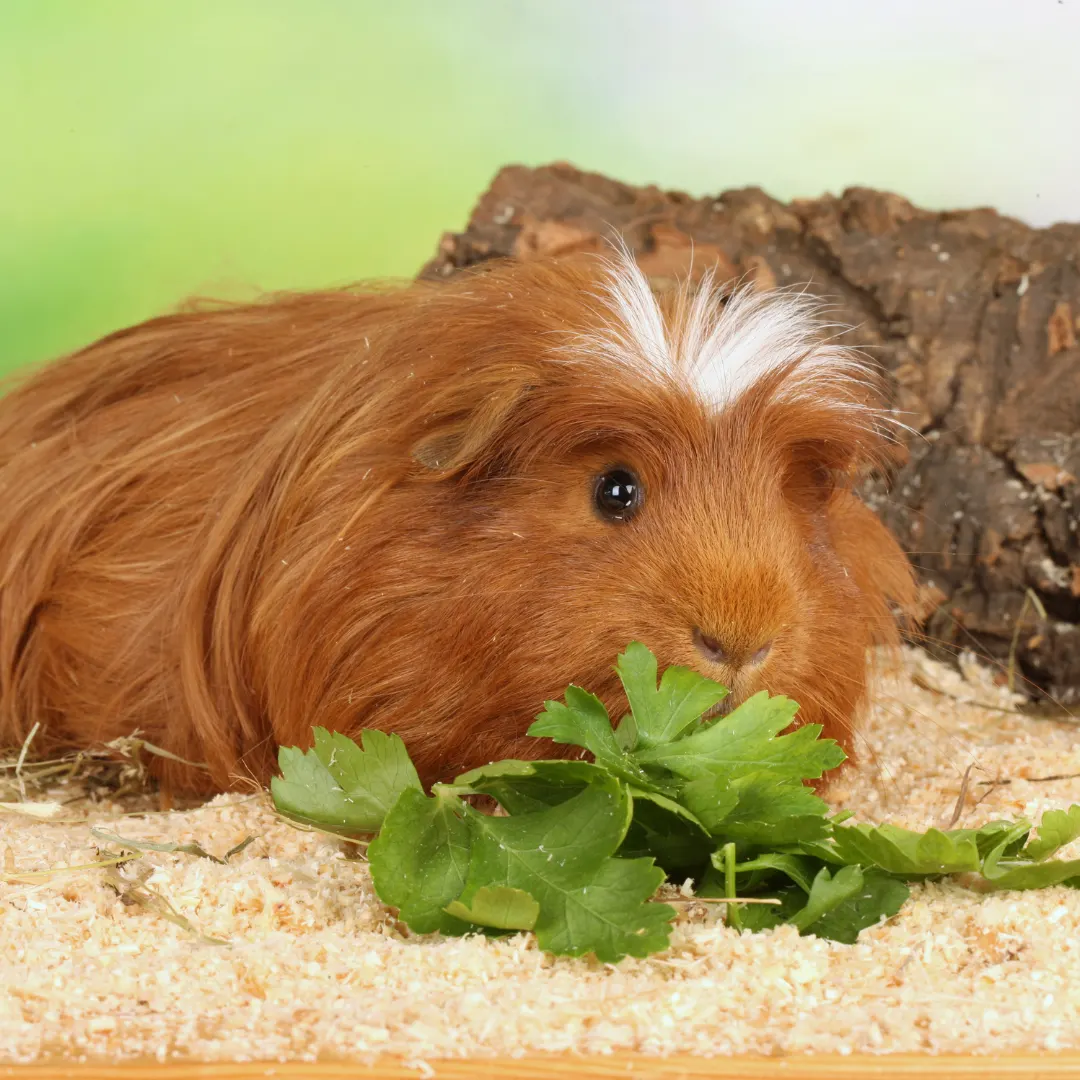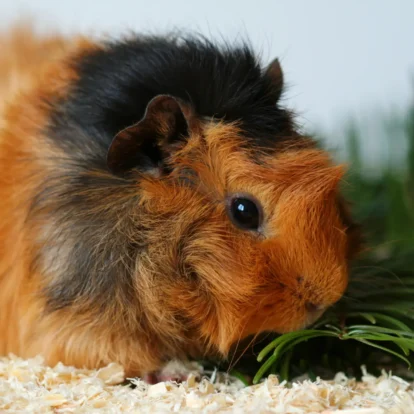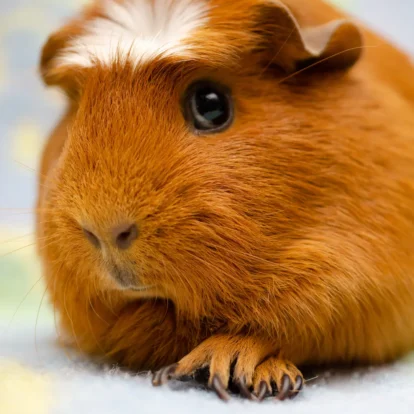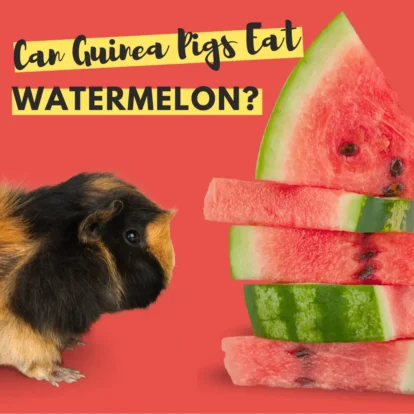Table of Contents
Introduction
Hey there, fellow guinea pig enthusiasts! 🐹
Have you found yourself pondering, “What do guinea pigs eat?” Well, you’re in for a treat (pun intended)! This post is your ultimate guide to ensuring your furry friends lead a happy, healthy life through the power of nutrition. A healthy diet is not just a luxury for our pet guinea pigs; it’s an absolute necessity. And here’s why!
Guinea pigs are unique little creatures, not just because of their adorable antics but also because of their specific dietary needs. Unlike other animals, guinea pigs cannot produce their own vitamin C, so they need it from their food. And that’s just the tip of the lettuce! 🥬 A balanced diet also goes a long way in maintaining their dental health, as their teeth never stop growing. Imagine that!
But it’s not just about throwing a mix of any food for guinea pigs and calling it a day. Nope. We need to ensure they’re getting the right mix of hay, fresh veggies, a bit of fruit, and, of course, fresh water. This daily diet helps keep their digestive system moving and prevents that dreaded upset tummy. Plus, the proper grub can keep them zooming around happily for years.
We’ll deep-dive into what makes up a healthy diet, those special treats that make their eyes light up, the foods to steer clear of to avoid a sad guinea pig face, and even how to keep a feeding schedule that fits their needs. 📅
Whether you’re a seasoned guinea pig parent or just thinking about adding one (or a few) to your family, there’s something here for everyone! Stick around as we chew over how to keep your guinea pig surviving and thriving!
What Do Guinea Pigs Eat
When discussing a healthy guinea pig diet, we plan a gourmet feast for our furry friends, where every morsel counts towards their happiness and well-being. 🌟
It’s not just about keeping their bellies full; it’s about offering a menu that meets all their nutritional needs, keeps those continuously growing teeth in check, and ensures their tiny digestive systems are chugging along nicely.
Fresh Hay: The Foundation of Their Diet
You’ve probably seen many guinea pigs happily munching away on hay – and for a good reason! Fresh feeding hay isn’t just a favorite pastime; it’s the bedrock of a guinea pig’s diet.
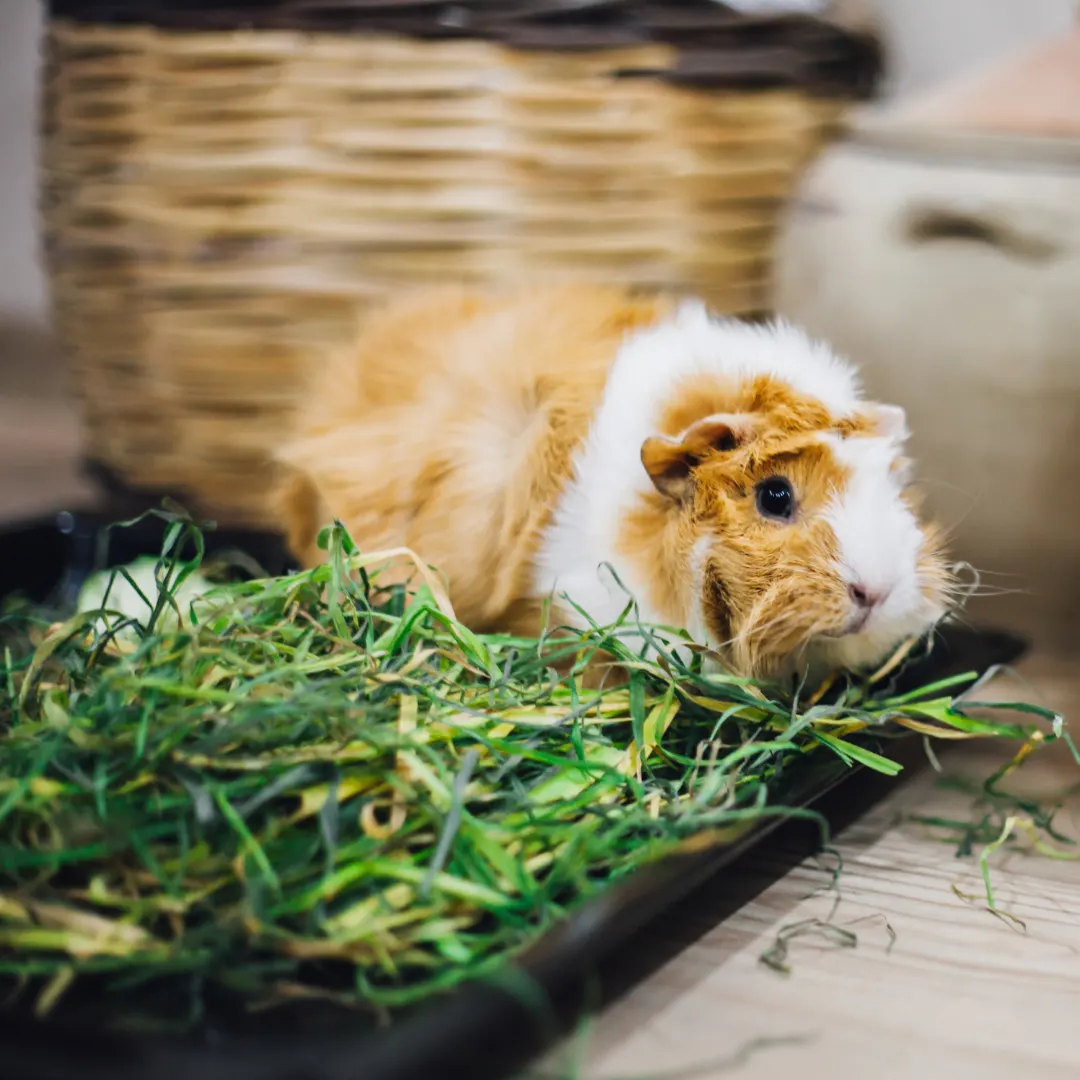
Unlimited access to high-quality hay, like Timothy hay or Orchard grass, helps prevent dental disease by wearing down those continuously growing teeth. Plus, it keeps their digestive system moving smoothly, avoiding upset stomach drama. 🌾
Remember, while Alfalfa hay is rich and yummy, it’s best reserved as an occasional treat for adult piggies because of its higher calcium content.
At least 85 – 90% of your guinea pigs’ diet should be hay and grass.
Fresh Vegetables: Adding Variety and Essential Nutrients
If fresh hay is the main course, then fresh leafy greens and safe vegetables are the critically acclaimed side dishes in a guinea pig’s diet.
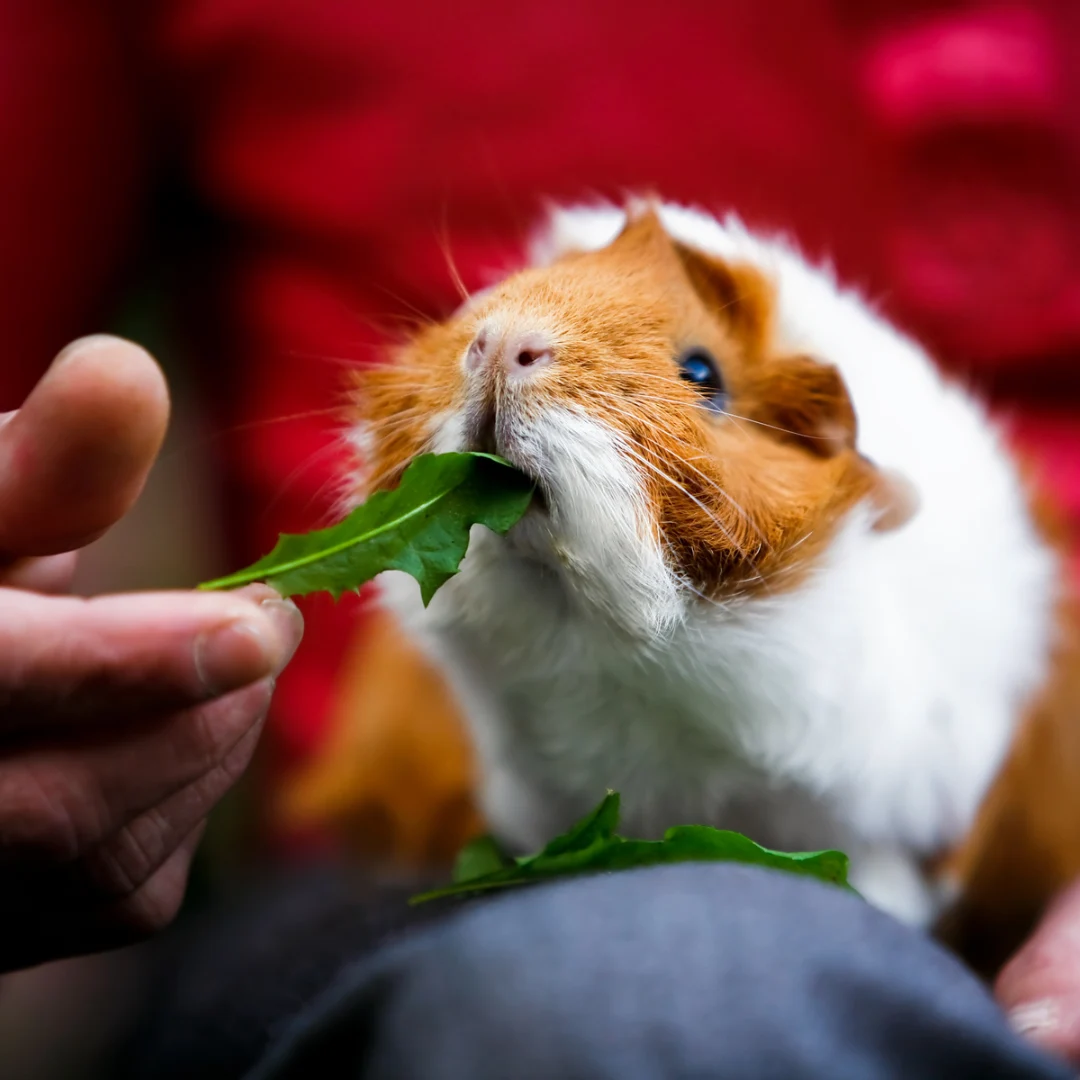
Think of it as introducing a burst of colors and flavors to their plate—high in Vitamin C and other essential nutrients they can’t make on their own but desperately need. Regular servings of leafy greens like romaine lettuce, spinach, and kale (in moderation), along with bell peppers and cucumbers, can make mealtime exciting and nutritious. 🥬
Remember, variety and moderation are critical to prevent tummy troubles.
A teacup amount of fresh greens and veg per guinea pig per day – greens and veg high in vitamin C are perfect.
High-Quality Pellets: Nutritional Supplements
And then, we sprinkle in some high-quality, grass-based pellets – the cherry on top of a well-rounded diet.
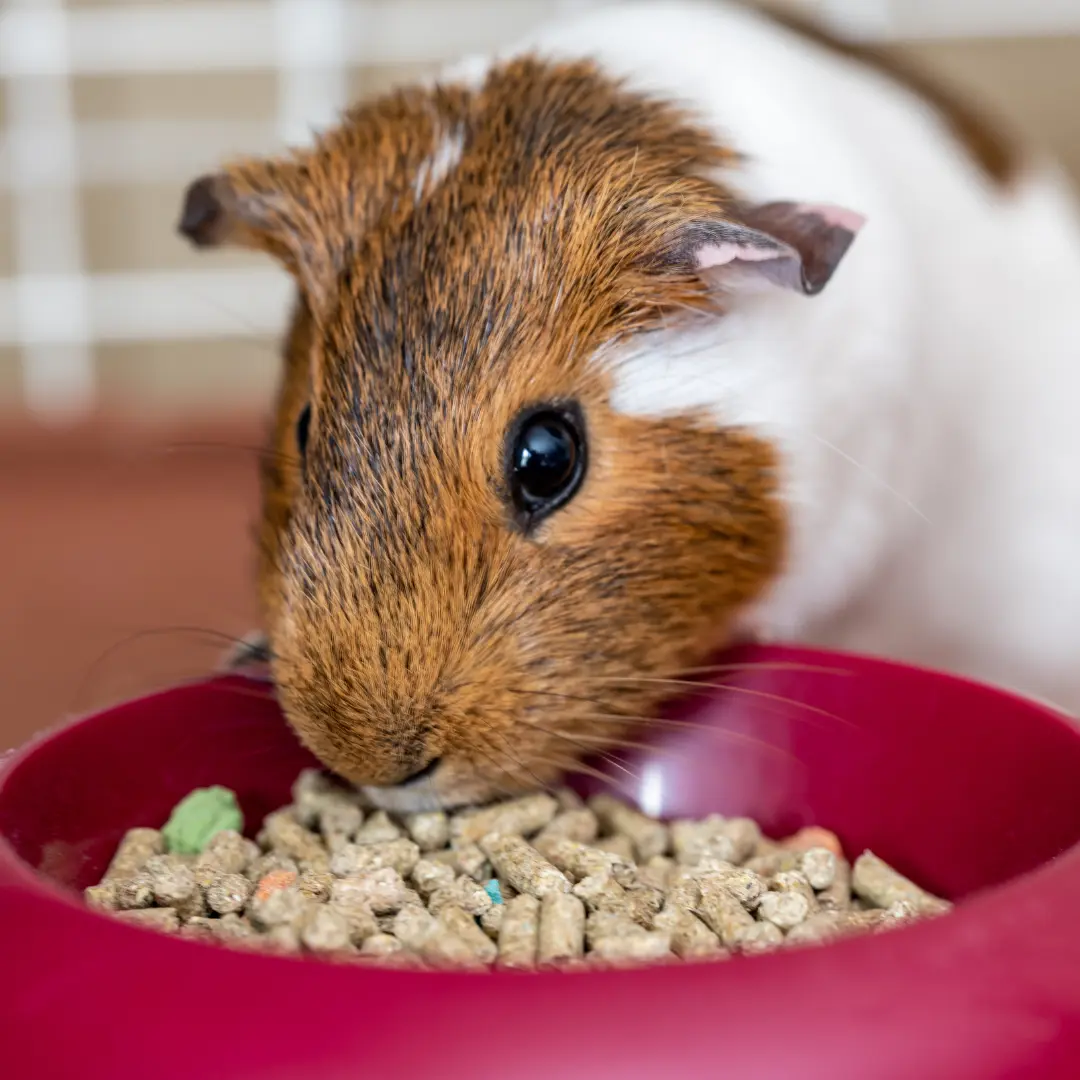
These pellets are packed with all the nutrients many guinea pigs might not get enough of, even with their gourmet hay and vegetable spread. However, think of pellets as a supplement rather than the main course; they should only make up a small fraction of their daily intake to avoid empty calories. Aim for morning and evening feeds, and choose brands that offer pellets high in Vitamin C and low in fillers. 🍒
Your guinea pigs should have one tablespoon of grass-based pellets per day.
Crafting the perfect diet for our guinea pigs might not require a chef’s hat but love, attention, and a sprinkle of knowledge. Whether picking up fresh grass hays from pet stores or growing fresh greens, remember that variety, moderation, and quality are the keys to a healthy, happy guinea pig.
And trust me, when you see them zooming around and popcorning with joy, you’ll know all the effort was worth it!
Treats: To Spoil or Not to Spoil?
Oh, the age-old debate among us guinea pig enthusiasts—should we spoil our furry friends with treats or not?
Well, why not dabble a little in treat-giving as long as we’re armed with the proper knowledge and moderation? 🌈 After all, guinea pigs, much like us, relish a slight change from their daily diet, and carefully chosen treats can bring them joy and supplement their vitamin intake.
But remember, the keyword here is ‘moderation.’ Too much of a good thing can quickly turn into a not-so-good thing.
Fruit Treats: Sweet Delights in Moderation
Fruit treats are like the occasional dessert for our guinea pigs—sweet, satisfying, and a delightful change from their routine. However, it’s crucial to choose safe fruits and monitor portion sizes to avoid any health hiccups.
Apples (without the seeds, please!), watermelon, and grapes can be sweet little indulgences for our guinea pigs. They’re tasty and a source of hydration and vitamin C. However, we must tread lightly on portion size, as too much sugar can lead to obesity and other health issues.
Think of offering fresh fruit as tiny, occasional treats – perhaps a small cube of apple or a grape cut in half, once or twice a week. 🍎 This way, we can spoil our guinea pigs without spoiling their health.
Also, always wash all fruits thoroughly to eliminate pesticides or chemicals, and steer clear of old food, which has little nutritional value and can be a choking hazard.
Veggie Treats: Healthy Snacking Options
On the other hand, vegetables can make for fantastic, nutritious snack options that you can be a bit more liberal with compared to fruits. Veggies like sweet potato (in tiny amounts), bell peppers, and even a kale leaf can be colorful guinea pig treats that excite their palate and provide essential nutrients like vitamin C.
Guinea pigs’ teeth are forever growing 🦷, and munching on raw veggies helps keep their dental health in check. However, just like with fruits, it’s essential to introduce a variety of veggies in moderation to maintain nutritional balance and prevent any digestive troubles. Mix it up, but keep a keen eye on how your guinea pig responds to different treats and adjust accordingly. 🥕
Crafting the perfect treat experience for our guinea pigs is almost like creating a tiny buffet of joy for them. While watching them nibble on these goodies with enthusiasm is exciting, it’s vital to be mindful of their diet’s balance.
By choosing the proper treats and offering them in moderation, we not only spoil our guinea pigs but also contribute to their health and happiness. And isn’t that the sweetest treat of all?
Remember, a little goes a long way, and it’s our responsibility to ensure their treat time is both safe and satisfying. With a sprinkle of knowledge and much love, you can make meal and snack times an adventure for your guinea pigs without compromising their nutrition.
Foods to Avoid: Steering Clear of Health Hazards
Just like us, our furry friends have a list of diet no-nos. 🚫 While sharing some of our snacks with those pleading eyes is tempting, some foods can be downright harmful to guinea pigs, either because of toxic substances or simply because they’re too rich in sugar or fat. Being mindful of these can prevent many health issues and keep our guinea pigs hopping and happy!
Toxic Foods: A Strict No-Go Zone
Here’s the thing: most guinea pigs are not equipped to handle certain foods that are fine for us but toxic for them. 🌿 Foods like avocado, chocolate, garlic, onion, and anything caffeinated should never make it into your guinea pig’s diet.
These can cause serious health issues, from digestive upset to potentially life-threatening conditions. Just as you’d keep harmful substances out of reach of children, keep these foods away from your guinea pigs.
Understanding the dangers of certain ingredients
It’s crucial to understand why some foods are harmful. For example, did you know developing bladder stones is a severe risk to guinea pigs fed a diet high in certain minerals? That’s right, foods high in oxalates, like spinach, can contribute to this painful condition.
Additionally, the lack of vitamin C can lead to scurvy, as guinea pigs are herbivores that require a steady supply of this essential nutrient. Knowledge is power, and understanding the dangers of certain ingredients is the first step in protecting our little ones.
High-Fat or Sugary Foods: Proceed With Caution
Though it’s hard to resist those cute guinea pig faces, we must, especially when it comes to high-fat or sugary foods. 🍪 These treats, while delicious, can lead to significant health problems, including obesity and diabetes.
A tiny piece of fruit here and there is fine, but keeping these to a treat minimum ensures your guinea pig’s diet is balanced and healthy. Remember, guinea pigs’ diet should mainly consist of hay, fresh veggies, and high-quality pellet food.
You can provide the best care possible by avoiding toxic foods and moderating high-fat and sugary indulgences. 🐹❤️
Feeding Schedule: When and How Much?
Feeding your fluffy friends is more than just a routine; it’s an opportunity to bond and ensure they’re as happy and healthy as can be! 😊
But figuring out the perfect feeding schedule for your guinea pigs can be a bit of a puzzle. Don’t worry, though—I’ve got some tips and insights to share that’ll help you nail down a routine that’s just right for your little buddies.
Frequency of Feeding: Keeping Their Tummies Happy
How often should guinea pigs eat throughout the day?
Well, in my experience, keeping their tummies satisfied means providing constant access to hay, which should make up the bulk of their diet. It’s like their personal all-you-can-eat buffet!
For fresh veggies and a small amount of high-quality pellet food, I’ve found that it keeps them content twice a day—morning and evening—without overdoing it. Creating a regular feeding routine helps regulate their digestion and establishes a comforting routine. Trust me, they’ll remind you when it’s time to eat! 😉
Best Time of Day to Feed: Making Mealtime Special
Is there an optimal feeding time?
From what I’ve gathered in my years of small pet parenting, guinea pigs don’t precisely wear watches, but they sure have an internal clock that’s quite accurate! They’re most active during dawn and dusk, so syncing your feeding times around these hours can really cater to their natural habits.
I love making mealtime a special moment by mixing up the veggies in the evening feed—it’s like their own little dinner party. Just remember to adjust the amounts so they’re not overeating and to maintain that precious bond by spending mealtime together. It’s all about creating a routine that suits your and your guinea pigs’ lifestyle, making each meal a moment to look forward to! 🐹💕
Conclusion
What do guinea pigs eat, you ask? Well, figuring out the perfect menu for my fuzzy friends has been an adventure! Their core diet consists of grass hay, fresh produce, and guinea pig pellets.
Remember, these little cuties need a constant supply of hay to prevent overgrown teeth and keep their digestion running smoothly. And while those colourful guinea pig treats at the store might catch your eye, offering a balanced diet is essential. 🌱
Introducing green beans and other vitamin-rich veggies can add a healthy variety to their food bowls. Don’t forget the vitamin C supplements, as guinea pigs can’t produce their own.
However, always consult a vet to ensure you’re providing the right amount. It’s a learning curve, figuring out the do’s and don’ts—like to avoid feeding them anything with caffeine or chocolate.
Ultimately, ensuring your guinea pigs’ food brings them joy, health, and a bit of excitement to their day is what it’s all about. Creating those moments when they popcorn around after discovering a new favorite veggie is priceless. Here’s to happy, healthy guinea pigs and our special bond with them! 🐾💚
Related Questions
Can Guinea Pigs’ Diet Influence How They Smell?
Absolutely! Diet plays a pivotal role in how our adorable guinea pigs smell! By feeding them a balanced mix of grass hay, fresh veggies, and a moderate amount of fruits, you’re ensuring they’re getting all their nutritional needs met and helping keep any funky odors at bay. 🌼🐹
Think of it like this: the cleaner and healthier the diet, the sweeter the aroma around their living space. So, if you’ve noticed a not-so-pleasant scent wafting from your guinea pig’s habitat, it might just be time to reassess their menu.

